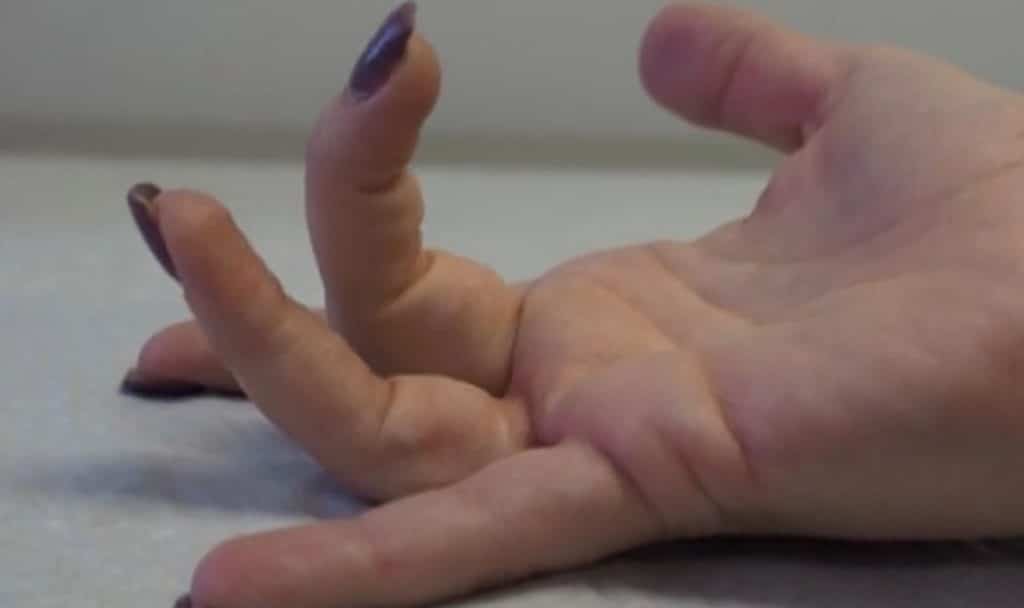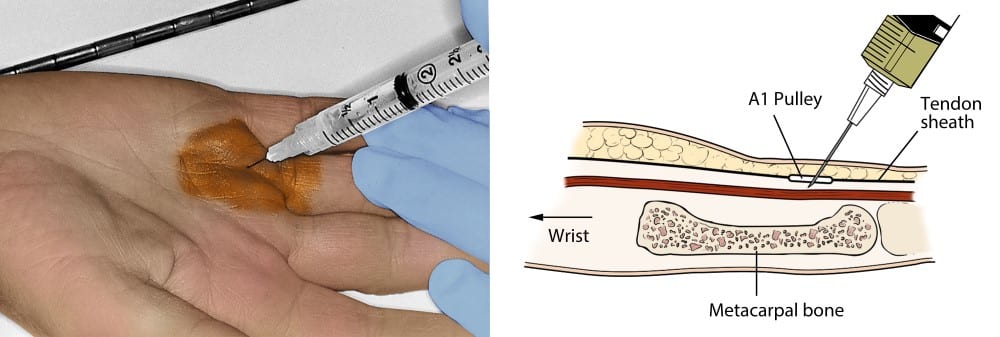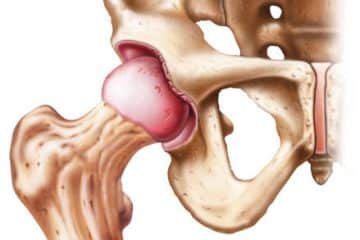Trigger finger, also known as stenosing tenosynovitis is a condition where one finger gets stuck in a bent position resulting in pain and difficulty moving the affected finger. The most commonly affected finger is the ring finger and thumb.
The condition derived its name, “trigger finger”, as the finger may straighten with a snap – like a trigger on a gun. The cause of the condition is still a matter of scientific research, however, some factors increase the risk of developing trigger finger namely injury, diabetes, kidney disease, thyroid disease and old age.

Treatment options include getting enough rest, splitting the finger, NSAIDs and steroids application. If all else fails, surgery is usually successful in restoring full movement. It’s also important to keep trigger finger surgery costs in mind as most insurance may not cover it.
Causes of Trigger Finger
The cause of the condition is unclear and is a subject of medical research. Several factors may increase your risk of developing the condition. These include:
- Medical conditions. Stenosing tenosynovitis is more common in people with certain medical conditions, such as diabetes and rheumatoid arthritis.
- Forceful hand activities. The condition is known to occur after forceful use of the fingers and thumb.
Treatment of Trigger Finger
Conservative treatment methods are often recommended as the first line of treatment for stenosing tenosynovitis. They include:
– Splinting: Sometimes, a special splint is worn to keep the finger extended for a few weeks, giving the tendon a chance to heal. A splint is also helpful in preventing sleeping with the fingers and thumb in a fist, which can worsen the condition.
– Non-steroidal anti-inflammatory drugs (NSAIDs): Use of NSAIDs may also help treat the condition.
– Corticosteroid injections: Injection of the tendon sheath with a corticosteroid is effective over weeks to months in more than half of people.

Trigger finger treatment using steroid injection
If these conservative approaches do not help, surgery may be indicated.
Trigger Finger Surgery
For symptoms that have persisted or recurred for more than 6 months and/or have been unresponsive to conservative treatment, surgical release of the A1 pulley may be recommended.
There are two main surgical techniques for stenosing tenosynovitis namely: Open Surgery and Percutaneous release surgery.
Open Surgery
The surgery, known as trigger finger release, is done as an outpatient procedure and takes about half an hour. It can take longer if more than one finger is being released.
Here is a step-by-step description of trigger finger surgery:
- The surgeon administers a local anesthetic and, once it takes effect, makes a small incision in the palm. For the trigger thumb, the incision is in the pad of the thumb.
- The surgeon then locates the tendon sheath and carefully cuts through it to make more space for the tendon.
- Before concluding the procedure and closing the wound, the surgeon may flex and extend the affected finger to make sure the tendon can move freely.
Once the anesthesia wears off, the finger should be able to move normally right away.
Percutaneous Surgery
“Percutaneous” means through the skin, and this in-office procedure uses a needle to treat the affected tendon sheath tissue. Here is a step-by-step description of percutaneous release for the trigger finger:
- The surgeon administers a local anesthetic, typically lidocaine.
- The physician uses ultrasound imaging to carefully guide the needle to the affected tendon sheath and avoid damage to the tendon or nearby nerves. Most physicians will use a 16- or 18-gauge needle—about the size of needles used for blood donation.
- The needle is used to break up constricting tissue around the tendon sheath.
- Because no incision is made, no stitches are needed after the procedure.
When considering trigger finger surgery cost, percutaneous surgery may be the most expensive option however, it is preferred in some centers due to its reported shorter time of recuperation of motor function, fewer complications, and less pain.
Trigger Finger Surgery Cost
The total cost for trigger finger surgery depends on a lot of factors such as the anesthetic fee, private hospital fee, private operating facility fee, affected finger, the extent of surgery required and the surgical technique to be followed. The total cost of the procedure is around $1,000 – $3,500.
Trigger Finger Surgery Risks and Complications
Complications associated with trigger finger surgery include persistent trigger finger, bowstringing, digital nerve injury, and continued triggering.
Other general risks associated with any type of surgery such as anesthetic risk, bleeding, infection, wound healing problems and unfavorable scars are all still possible.
Trigger Finger Surgery Recovery
The recovery time after surgery for Stenosing tenosynovitis varies depending on the approach taken. For example, splinting may require several weeks for full healing of the joint. Even with surgery, you can expect to be back to your routine within a few weeks.
More: Surgery For Lung Cancer


